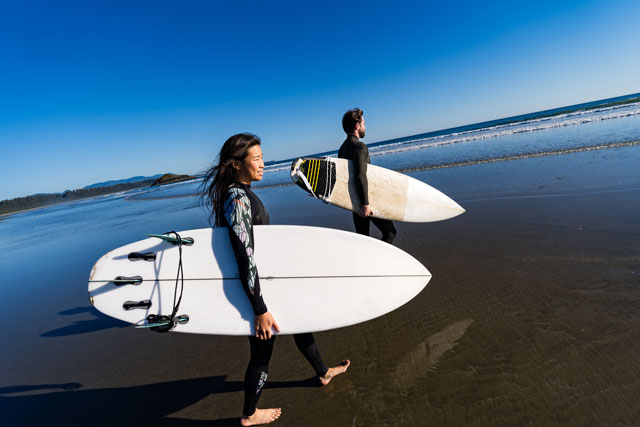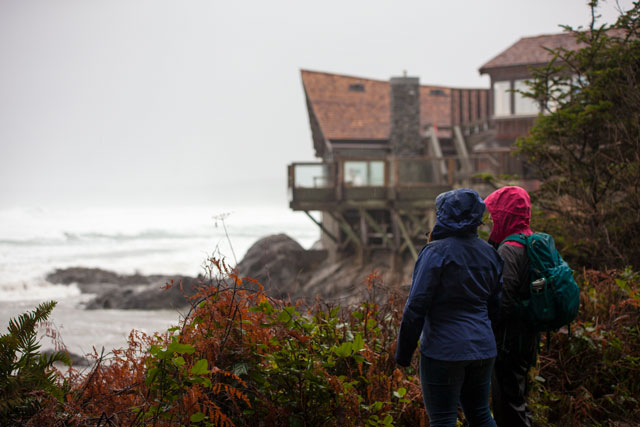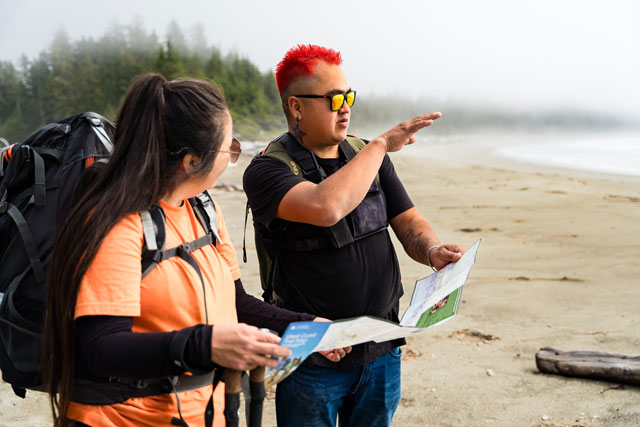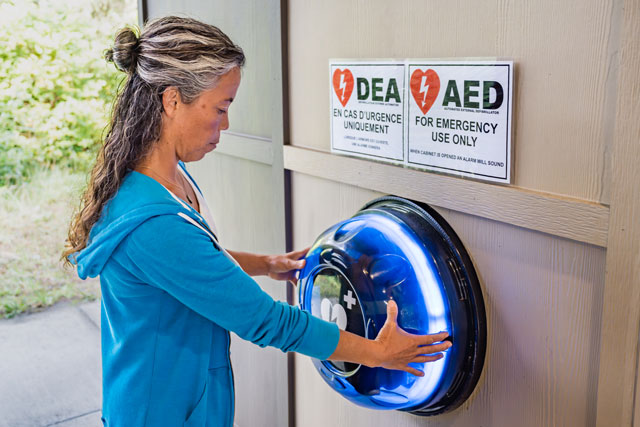
Safety and Guidelines
Pacific Rim National Park Reserve
We rarely head out for an outdoor adventure with the expectation that something will go wrong, and most times everything will go right. However, sometimes the unexpected happens and when it does, it’s important that you are well informed and well prepared to minimise the negative impact of unfortunate circumstances.
For general information on how to stay safe when enjoying the outdoors visit adventuresmart.ca.

Wildlife safety
You are visiting an area that is home to a diverse array of wildlife. What you do can have an impact on the safety of wildlife, your safety and the safety of other visitors.

Water safety
Pacific Rim National Park Reserve borders the Pacific Ocean. Many visitors come to this region to participate in the recreational activities the ocean has to offer. While the ocean may look inviting, hazards such as large surf, rip currents and cold water temperatures are present. Knowing that these hazards exist and taking reasonable precautions can minimize the risk of personal injury.

Shoreline safety
The sandy coastlines and rocky shores along Pacific Rim National Park Reserve are exposed to the open Pacific Ocean. This means that high tides, large waves and rolling logs can expose hikers and storm watchers to hazardous situations. Creeks and streams flowing into the Pacific Ocean will also be affected by these conditions. Being aware of shoreline risks and taking reasonable measures to mitigate them will minimize the risk of personal injury.

Weather and climate
Weather in Pacific Rim National Park Reserve is characterized by cool summers, mild winters and abundant moisture. Although the west coast climate can be seen as mild in comparison to the rest of Canada, Pacific Rim National Park Reserve is often subject to extreme weather. Extreme weather conditions include prolonged and heavy rainfall, hurricane force winds and dense, wet fog.

West Coast Trail safety
The West Coast Trail is one of the three units that makes up Pacific Rim National Park Reserve. The west Coast Trail is an overnight backpacking trail that is suitable for experienced hikers. Wet and foggy weather conditions, remote locations, wilderness, rough terrain and proximity to the ocean and rivers make this trail challenging; these challenges mean that accidents and injuries sometimes occur. Please read this safety information specific to the trail to be prepared for the risks you may be exposed to during your hike and how to minimize personal injury.

AdventureSmart
For general information, hints and tips related to how to prepare for wide range of outdoor activities we encourage you to visit AdventureSmart. Get informed & go outdoors!
Use of drones at Parks Canada places
Drone flying is a popular hobby and useful in many fields of work. However, drones can pose risks to visitors, disturb wildlife and lead to negative experiences for other visitors to Pacific Rim National Park Reserve. For these reasons, Parks Canada strictly limits the use of drones.
Anyone caught operating a drone within national park reserve boundaries and without an approved permit may result in law enforcement action and a fine of up to $25,000.
Flying for fun
All Parks Canada places are “no drone zones” for recreational use. Please leave your drone at home.
Non-recreational use
The national park reserve Superintendent may authorize limited use of drones for:
- natural and cultural resource management
- public safety
- law enforcement
- park/site management purposes
For non-recreational drone usage, you will need:
- permission from the national park reserve Superintendent
- confirmation that you meet Transport Canada’s requirements
The risks and impacts of drone flight vary depending on time/season and location; therefore, each application is evaluated separately.
Scientific research
You must identify the desire to fly a drone in your Research and Collection Permit application.
Other uses
For other uses, please contact the park or site directly.
Report a drone
If you witness the use of a drone in Pacific Rim National Park Reserve, please report the incident to park wardens via Parks Canada Dispatch 1-877-852-3100 or 1-250-726-3604.
Useful links:
Automated external defibrillator (AED) locations

Pacific Rim National Park Reserve has 5 public-access automated external defibrillators (AED) in the Long Beach Unit.
These AEDs are housed in heated, weatherproof cabinets, and are located in strategic locations ensuring swift action during an emergency.
- Kʷisitis Visitor Centre at Wickaninnish Beach
- Wickaninnish Beach Washroom (#C beach access)
- Green Point Campground Check-In Kiosk (when campground is open)
- Long Beach South Washroom (#2 beach access)
- Incinerator Rock Washroom
Swimmer’s itch
Swimmer’s itch is often present at Kennedy Lake Swim Beach in the Long Beach Unit during the warm summer months.
Swimmers Itch is caused by a small parasite that burrows under the skin surface. After it enters the skin, it dies and may cause welts and itching that can last up to a few days. Some people, often children, are more sensitive to it than others. Sensitivity may increase with subsequent exposures.
Precautions:
- Avoid swimming in areas where swimmers itch is a problem.
- Avoid swimming for long periods in shallow water or near marshes.
- Towel off immediately after leaving the water.
Swimmers Itch is common and naturally occurring in fresh water throughout North America. The parasite is generally transmitted between birds and snails. There are no human health concerns, however the itching can be very uncomfortable.
Swimmer's Itch Symptoms
- Tingling Sensations - Shortly after emerging from the water, swimmers will notice a tingling sensation on exposed parts of the body.
- Red Spots - Swimmers will next notice small red spots where the organism has penetrated the skin.
- Itching - Hours later, the tingling sensation will disappear, and the red spots will enlarge and become itchy. The degree of discomfort varies with the sensitivity of the individual, the severity of the infestation and prior exposure.
What can you do if a rash appears:
There are two main ways of treating Swimmer’s Itch, either through a topical medicine or taking antihistamines. Topical cures include: a baking soda paste, Aveeno Anti-Itch cream, calamine lotion, After Bite, Solarcaine and Stop Itch.
For more information, please contact Park Staff.
Safety is everyone’s responsibility. At Parks Canada, we do our part to make sure you can have a safe visit by assessing the risks, managing hazards, and making sure that safety information is freely available to everyone. You can do your part as visitors by making sure you seek out the information you need to stay safe and make well informed decisions while enjoying these special places. Visit our websites and stop at a visitor center to speak with our employees for the most up to date information. Make sure you are fully prepared for whatever activities you choose to participate in so you can have a safe, enjoyable and memorable visit.
In case of emergency contact: 250-726-3604 or 1-877-852-3100.
- Date modified :